Journal Article
Publication Types:

Chitin Triggers Calcium-mediated Immune Response in the Plant Model Physcomitrella patens
Abstract
A characteristic feature of a plant immune response is the increase of the cytosolic calcium (Ca2+) concentration following infection, which results in the downstream activation of immune response regulators. The bryophyte Physcomitrella patens has been shown to mount an immune response when exposed to bacteria, fungi, or chitin elicitation, in a manner similar to the one observed in Arabidopsis thaliana. Nevertheless, whether P. patens’ response to microorganisms exposure is Ca2+ mediated is currently unknown. Here we show P. patens plants treated with chitin oligosaccharides exhibit Ca2+ oscillations, and that a calcium ionophore can stimulate the expression of defense-related genes. Chitin oligosaccharide treatment also results in an inhibition of growth, which can be explained by the depolymerization of the apical actin cytoskeleton of tip growing cells. These results suggest that chitin triggered calcium oscillations are conserved and were likely present in the common ancestor of bryophytes and vascular plants.
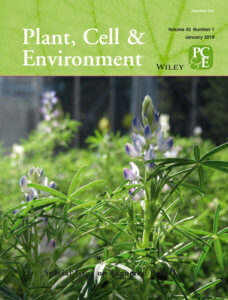
MtMOT1.2 is responsible for molybdate supply to Medicago truncatula nodules
Abstract
Symbiotic nitrogen fixation in legume root nodules requires a steady supply of molybdenum for synthesis of the iron-molybdenum cofactor of nitrogenase. This nutrient has to be provided by the host plant from the soil, crossing several symplastically disconnected compartments through molybdate transporters, including members of the MOT1 family.
MtMOT1.2 is a Medicago truncatula MOT1 family member located in the endodermal cells in roots and nodules. Immunolocalization of a tagged MtMOT1.2 indicates that it is associated to the plasma membrane and to intracellular membrane systems, where it would be transporting molybdate towards the cytosol, as indicated in yeast transport assays. A loss-of-function mot1.2-1 mutant showed reduced growth compared to wild-type plants when nitrogen fixation was required, but not when nitrogen was provided as nitrate. While no effect on molybdenum-dependent nitrate reductase activity was observed, nitrogenase activity was severely affected, explaining the observed difference of growth depending on nitrogen source. This phenotype was the result of molybdate not reaching the nitrogen-fixing nodules, since genetic complementation with a wild-type MtMOT1.2 gene or molybdate-fortification of the nutrient solution, both restored wild-type levels of growth and nitrogenase activity. These results support a model in which MtMOT1.2 would mediate molybdate delivery by the vasculature into the nodules.
Please note that you still may get the preprinted document at BioRxiv.
The diverse iron distribution in Eudicotyledoneae seeds: from Arabidopsis to Quinoa
Abstract
Seeds accumulate iron during embryo maturation stages of embryogenesis. Using Arabidopsis thaliana as model plant, it has been described that mature embryos accumulate iron within a specific cell layer, the endodermis. This distribution pattern was conserved in most of the analyzed members from Brassicales, with the exception of the basal Vasconcellea pubescens that also showed elevated amounts of iron in cortex cells. To determine whether the V. pubescens iron distribution was indicative of a wider pattern in non-Brassicales Eudicotyledoneae, we studied iron distribution pattern in different embryos belonging to plant species from different Orders from Eudicotyledoneae and one basal from Magnoliidae. The results obtained indicate that iron distribution in A. thaliana embryo is an extreme case of apomorphic character found in Brassicales, not-extensive to the rest of Eudicotyledoneae.
MtMTP2-facilitated zinc transport into intracellular compartments is essential for nodule development in Medicago truncatula
Abstract
Zinc (Zn) is an essential nutrient for plants that is involved in almost every biological process. This includes symbiotic nitrogen fixation, a process carried out by endosymbiotic bacteria (rhizobia) living within differentiated plant cells of legume root nodules. Zn transport in nodules involves delivery from the root, via the vasculature, release into the apoplast and uptake into nodule cells. Once in the cytosol, Zn can be used directly by cytosolic proteins or delivered into organelles, including symbiosomes of infected cells, by zinc efflux transporters. Medicago truncatula MtMTP2 (Medtr4g064893) is a nodule-induced Zn-efflux protein that was localized to an intracellular compartment in root epidermal and endodermal cells, as well as in nodule cells. Although the MtMTP2 gene is expressed in roots, shoots, and nodules, mtp2 mutants exhibited growth defects only under symbiotic, nitrogen-fixing conditions. Loss of MtMTP2 function resulted in altered nodule development, defects in bacteroid differentiation, and severe reduction of nitrogenase activity. The results presented here support a role of MtMTP2 in intracellular compartmentation of Zn, which is required for effective symbiotic nitrogen fixation in M. truncatula.
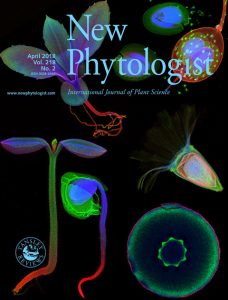
Medicago truncatula copper transporter 1 (MtCOPT1) delivers copper for symbiotic nitrogen fixation
Abstract
Copper is an essential nutrient for symbiotic nitrogen fixation. This element is delivered by the host plant to the nodule, where membrane copper transporter would introduce it into the cell to synthesize cuproproteins.
COPT family members in model legume Medicago truncatula were identified and their expression determined. Yeast complementation assays, confocal microscopy, and phenotypical characterization of a Tnt1 insertional mutant line were carried out in the nodule-specific M. truncatula COPT family member.
Medicago truncatula genome encodes eight COPT transporters. MtCOPT1 (Medtr4g019870) is the only nodule-specific COPT gene. It is located in the plasma membrane of the differentiation, interzone and early fixation zones. Loss of MtCOPT1 function results in a copper-mitigated reduction of biomass production when the plant obtains its nitrogen exclusively from symbiotic nitrogen fixation. Mutation of MtCOPT1 results in diminished nitrogenase activity in nodules, likely an indirect effect from the loss of a copper-dependent function, such as cytochrome oxidase activity in copt1-1 bacteroids.
These data are consistent with a model in which MtCOPT1 transports copper from the apoplast into nodule cells to provide copper for essential metabolic processes associated with symbiotic nitrogen fixation.
Please note that you still may get the preprinted document at BioRxiv.
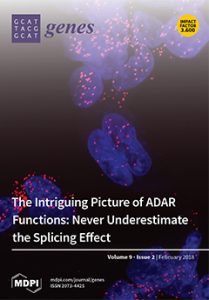
Genomic Diversity in the Endosymbiotic Bacterium Rhizobium leguminosarum
Abstract
Rhizobium leguminosarum bv. viciae is a soil α-proteobacterium that establishes a diazotrophic symbiosis with different legumes of the Fabeae tribe. The number of genome sequences from rhizobial strains available in public databases is constantly increasing, although complete, fully annotated genome structures from rhizobial genomes are scarce. In this work, we report and analyse the complete genome of R. leguminosarum bv. viciae UPM791. Whole genome sequencing can provide new insights into the genetic features contributing to symbiotically relevant processes such as bacterial adaptation to the rhizosphere, mechanisms for efficient competition with other bacteria, and the ability to establish a complex signalling dialogue with legumes, to enter the root without triggering plant defenses, and, ultimately, to fix nitrogen within the host. Comparison of the complete genome sequences of two strains of R. leguminosarum bv. viciae, 3841 and UPM791, highlights the existence of different symbiotic plasmids and a common core chromosome. Specific genomic traits, such as plasmid content or a distinctive regulation, define differential physiological capabilities of these endosymbionts. Among them, strain UPM791 presents unique adaptations for recycling the hydrogen generated in the nitrogen fixation process.

An Iron-Activated Citrate Transporter, MtMATE67, Is Required for Symbiotic Nitrogen Fixation
Abstract
Iron is an essential micronutrient for symbiotic nitrogen fixation in legume nodules, where it is required for the activity of bacterial nitrogenase, plant leghemoglobin, respiratory oxidases and other iron-proteins in both organisms. Iron solubility and transport within and between plant tissues is facilitated by organic chelators, such as nicotianamine and citrate. We have characterized a nodule-specific citrate transporter of the multidrug and toxic compound extrusion family, MtMATE67 of Medicago truncatula. The MtMATE67 gene was induced early during nodule development and expressed primarily in the invasion zone of mature nodules. The MtMATE67 protein was localized to the plasma membrane of nodule cells, and also the symbiosome membrane surrounding bacteroids in infected cells. In oocytes, MtMATE67 transported citrate out of cells in an iron-activated manner. Loss of MtMATE67 gene function resulted in accumulation of iron in the apoplasm of nodule cells and a substantial decrease in symbiotic nitrogen fixation and plant growth. Taken together, the results point to a primary role of MtMATE67 in citrate efflux from nodule cells in response to an iron signal. This efflux is necessary to ensure Fe(III) solubility and mobility in the apoplasm and uptake into nodule cells. Likewise, MtMATE67-mediated citrate transport into the symbiosome space would increase the solubility and availability of Fe(III) for rhizobial bacteroids.

Medicago truncatula Zinc-Iron Permease6 provides zinc to rhizobia-infected nodule cells
Abstract
In collaboration with Dr. C. Larue (CNRS), Dr. J. Imperial (CSIC), and Dr. D. Grolimund (SLS), the lab has recently published the characterization of MtZIP6 role in symbiotic nitrogen fixation in Plant Cell & Environment. This transporter is responsible for introducing Zn into rhizobia-infected cells.
Zinc is a micronutrient required for symbiotic nitrogen fixation. It has been proposed that in model legume Medicago truncatula, zinc is delivered in a similar fashion as iron, i.e. by the root vasculature into the nodule and released in the infection/differentiation zone. There, zinc transporters must introduce this element into rhizobia-infected cells to metallate the apoproteins that use zinc as a cofactor. MtZIP6(Medtr4g083570) is a M. truncatula Zinc-Iron Permease (ZIP) that is expressed only in roots and nodules, with the highest expression levels in the infection/differentiation zone. Immunolocalization studies indicate that it is located in the plasma membrane of rhizobia-infected cells in the nodule. Down-regulating MtZIP6 expression levels with RNAi does not result in any strong phenotype when plants are being watered with mineral nitrogen. However, these silenced plants displayed severe growth defects when they depended on nitrogen fixed by their nodules, as a consequence of the loss of 80% of their nitrogenase activity. The reduction of this activity was not the result of iron not reaching the nodule, but an indirect effect of zinc being retained in the infection/differentiation zone and not reaching the cytosol of rhizobia-infected cells. These data are consistent with a model in which MtZIP6 would be responsible for zinc uptake by rhizobia-infected nodule cells in the infection/differentiation zone.
Please note that you still may get the preprinted document at BioRxiv.

Medicago truncatula Molybdate Transporter type 1 (MtMOT1.3) is a plasma membrane molybdenum transporter required for nitrogenase activity in root nodules under molybdenum deficiency
Abstract
Molybdenum, as a component of the iron-molybdenum cofactor of nitrogenase, is essential for symbiotic nitrogen fixation. This nutrient has to be provided by the host plant through molybdate transporters. Members of the molybdate transporters family MOT1 were identified in the model legume Medicago truncatula and their expression in nodules determined. Yeast toxicity assays, confocal microscopy, and phenotypical characterization of a Tnt1 insertional mutant line were carried out in the one M. truncatula MOT1 family member expressed specifically in nodules. Among the five MOT1 members present in M. truncatula genome, MtMOT1.3 is the only one uniquely expressed in nodules. MtMOT1.3 shows molybdate transport capabilities when expressed in yeast. Immunolocalization studies revealed that MtMOT1.3 is located in the plasma membrane of nodule cells. A mot1.3-1 knockout mutant showed an impaired growth concomitant with a reduction in nitrogenase activity. This phenotype was rescued by increasing molybdate concentrations in the nutritive solution, or upon addition of an assimilable nitrogen source. Furthermore, mot1.3-1 plants transformed with a functional copy of MtMOT1.3 showed a wild type-like phenotype. These data are consistent with a model in which MtMOT1.3 would be responsible for introducing molybdate into nodule cells, which will be later used to synthesize functional nitrogenase.
Please note that you still may get the preprinted document at BioRxiv.

Unlocking the bacterial and fungal communities assemblages of sugarcane microbiome
Abstract
Plant microbiome and its manipulation herald a new era for plant biotechnology with the potential to benefit sustainable crop production. However, studies evaluating the diversity, structure and impact of the microbiota in economic important crops are still rare. Here we describe a comprehensive inventory of the structure and assemblage of the bacterial and fungal communities associated with sugarcane. Our analysis identified 23,811 bacterial OTUs and an unexpected 11,727 fungal OTUs inhabiting the endophytic and exophytic compartments of roots, shoots, and leaves. These communities originate primarily from native soil around plants and colonize plant organs in distinct patterns. The sample type is the primary driver of fungal community assemblage, and the organ compartment plays a major role in bacterial community assemblage. We identified core bacterial and fungal communities composed of less than 20% of the total microbial richness but accounting for over 90% of the total microbial relative abundance. The roots showed 89 core bacterial families, 19 of which accounted for 44% of the total relative abundance. Stalks are dominated by groups of yeasts that represent over 12% of total relative abundance. The core microbiome described here comprise groups whose biological role underlies important traits in plant growth and fermentative processes.
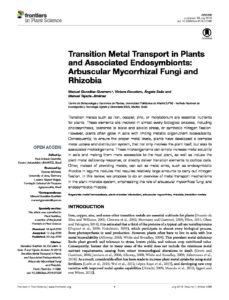
Transition metal transport in plants and associated endosymbionts: Arbuscular mycorrhizal fungi and rhizobia
Abstract
Transition metals such as iron, copper, zinc, or molybdenum are essential nutrients for plants. These elements are involved in almost every biological process, including photosynthesis, tolerance to biotic and abiotic stress, or symbiotic nitrogen fixation. However, plants often grow in soils with limiting metallic oligonutrient bioavailability. Consequently, to ensure the proper metal levels, plants have developed a complex metal uptake and distribution system, that not only involves the plant itself, but also its associated microorganisms. These microorganisms can simply increase metal solubility in soils and making them more accessible to the host plant, as well as induce the plant metal deficiency response, or directly deliver transition elements to cortical cells. Other, instead of providing metals, can act as metal sinks, such as endosymbiotic rhizobia in legume nodules that requires relatively large amounts to carry out nitrogen fixation. In this review, we propose to do an overview of metal transport mechanisms in the plant–microbe system, emphasizing the role of arbuscular mycorrhizal fungi and endosymbiotic rhizobia.
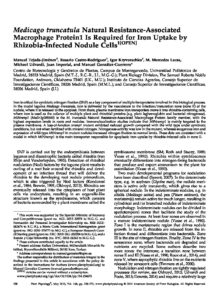
Medicago truncatula Natural Resistance-Associated Macrophage Protein1 Is Required for Iron Uptake by Rhizobia-Infected Nodule Cells
Abstract
Iron is critical for symbiotic nitrogen fixation as a key component of multiple ferroproteins involved in this biological process. In the model legume Medicago truncatula, iron is delivered by the vasculature to the infection/maturation zone (zone II) of the nodule where it is released to the apoplast. From there, plasma membrane iron transporters move it into rhizobia-containing cells, where iron is used as the cofactor of multiple plant and rhizobial proteins, e.g. plant leghemoglobin and bacterial nitrogenase. MtNramp1 (Medtr3g088460) is the M. truncatula Nramp family member with the highest expression levels in roots and nodules. Immunolocalization studies indicate that MtNramp1 is mainly targeted to the plasma membrane. A loss-of-function nramp1 mutant exhibited reduced growth compared to the wild type under symbiotic conditions, but not when fertilized with mineral nitrogen. Nitrogenase activity was low in the mutant, whereas exogenous iron and expression of wild-type MtNramp1 in mutant nodules increased nitrogen fixation to normal levels. These data are consistent with a model in which MtNramp1 is the main transporter responsible for apoplastic iron uptake by rhizobia-infected cells in zone II.
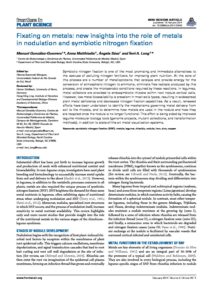
Fixating on metals: new insights into the role of metals in nodulation and symbiotic nitrogen fixation
Abstract
Symbiotic nitrogen fixation is one of the most promising and immediate alternatives to the overuse of polluting nitrogen fertilizers for improving plant nutrition. At the core of this process are a number of metalloproteins that catalyze and provide energy for the conversion of atmospheric nitrogen to ammonia, eliminate free radicals produced by this process, and create the microaerobic conditions required by these reactions. In legumes, metal cofactors are provided to endosymbiotic rhizobia within root nodule cortical cells. However, low metal bioavailability is prevalent in most soils types, resulting in widespread plant metal deficiency and decreased nitrogen fixation capabilities. As a result, renewed efforts have been undertaken to identify the mechanisms governing metal delivery from soil to the rhizobia, and to determine how metals are used in the nodule and how they are recycled once the nodule is no longer functional. This effort is being aided by improved legume molecular biology tools (genome projects, mutant collections, and transformation methods), in addition to state-of-the-art metal visualization systems.
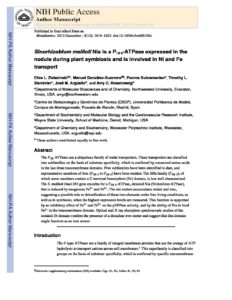
Sinorhizobium meliloti Nia is a P1B-5-ATPase expressed in the nodule during plant symbiosis and is involved in Ni and Fe transport
Abstract
The P1B-ATPases are a ubiquitous family of metal transporters. These transporters are classified into subfamilies on the basis of substrate specificity, which is conferred by conserved amino acids in the last three transmembrane domains. Five subfamilies have been identified to date, and representative members of four (P1B-1 to P1B-4) have been studied. The fifth family (P1B-5), of which some members contain a C-terminal hemerythrin (Hr) domain, is less well characterized. The S. meliloti Sma1163 gene encodes for a P1B-5-ATPase, denoted Nia (Nickel/iron ATPase), that is induced by exogenous Fe2+ and Ni2+. The nia mutant accumulates nickel and iron, suggesting a possible role in detoxification of these two elements under free-living conditions, as well as in symbiosis, when the highest expression levels are measured. This function is supported by an inhibitory effect of Fe2+ and Ni2+ on the pNPPase activity, and by the ability of Nia to bind Fe2+ in the transmembrane domain. Optical and X-ray absorption spectroscopic studies of the isolated Hr domain confirm the presence of a dinuclear iron center and suggest that this domain might function as an iron sensor.
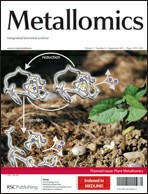
Iron distribution through the developmental stages of Medicago truncatula nodules
Abstract
Paramount to symbiotic nitrogen fixation (SNF) is the synthesis of a number of metalloenzymes that use iron as a critical component of their catalytical core. Since this process is carried out by endosymbiotic rhizobia living in legume root nodules, the mechanisms involved in iron delivery to the rhizobia-containing cells are critical for SNF. In order to gain insight into iron transport to the nodule, we have used synchrotron-based X-ray fluorescence to determine the spatio-temporal distribution of this metal in nodules of the legume Medicago truncatula with hitherto unattained sensitivity and resolution. The data support a model in which iron is released from the vasculature into the apoplast of the infection/differentiation zone of the nodule (zone II). The infected cell subsequently takes up this apoplastic iron and delivers it to the symbiosome and the secretory system to synthesize ferroproteins. Upon senescence, iron is relocated to the vasculature to be reused by the shoot. These observations highlight the important role of yet to be discovered metal transporters in iron compartmentalization in the nodule and in the recovery of an essential and scarce nutrient for flowering and seed production.
